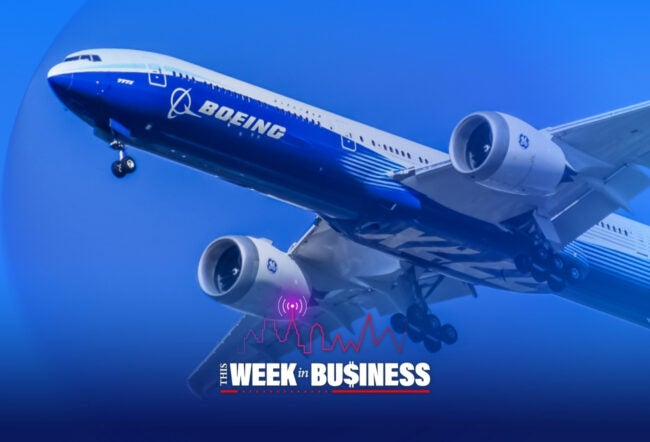Terry Gou, chairman of iPhone assembler Hon Hai Precision Industry Co., based in Taiwan, has long had his sights set on acquiring the brand name and technology of a global electronics maker. With the $3.5 billion purchase of Japan’s Sharp Corp. in early April, Gou aims for his company, better known as Foxconn, to turn a corner on the path to becoming a global name-brand manufacturer. The acquisition is also a turning point for Japanese electronics companies, which have lost their competitive edge to Apple, Samsung and LG Electronics. In a tight corner financially and shedding its product divisions as fast as it can find buyers to take them, Sharp has bet its future on Gou’s cost cutting and marketing savvy.
Some experts are questioning whether Foxconn, the world’s largest original equipment manufacturer, or OEM, can manage to turn around Sharp. Despite its long history and extensive range of consumer electronics products, from LCD TVs to washing machines and smartphones, Sharp ran up cumulative losses of 1.023 trillion yen in the past four fiscal years, except for a slight profit in the fiscal year ended March 31, 2014.
Wedding the distinctly different corporate Japanese and Taiwanese corporate cultures may be the biggest obstacle Gou faces, experts say.
Osaka-based Sharp started out as the Ever Sharp Co. in 1912, a maker of mechanical pencils. A century later in 2012, as the company ran up huge losses, it was Foxconn, an upstart founded by Gou to make plastic parts for black and white TVs, that was seeking to move up the value chain by agreeing to invest 9.88% in Sharp.
Foxconn’s interest in Sharp has much less to do with Sharp than with its own ambitions to become a maker of household name-brand electronics, says Marshall Meyer, a professor emeritus of management at Wharton. OEM assembly of consumer goods is becoming less and less profitable as labor costs rise in China. Only by moving downstream can Foxconn keep growing. “It is partly about technology but a lot about branding. Terry Gou wants a brand. The issue is not turning around Sharp but it is rather ramping up Sharp as a brand,” he says.
Foxconn gets little of the profit from Apple’s sales of its iPhones and other products. Gou intends to change that by reviving Sharp as a brand and generating the kind of name recognition held by Japanese electronics companies. “No one knows who Foxconn is in the U.S.,” Meyer says.
“Terry Gou wants a brand. The issue is not turning around Sharp but it is rather ramping up Sharp as a brand.” –Marshall Meyer
The Foxconn-Sharp deal is part of a growing trend of Chinese and Taiwanese manufacturers buying Japanese electronics makers. It may be the only way those increasingly marginalized brands can survive. Toshiba Corp. announced an agreement on March 30 with Chinese white goods maker Midea Group to buy an 80.1% stake in Toshiba Lifestyle Products & Services Corp., which makes appliances like refrigerators, washing machines and vacuum cleaners. That followed Lenovo’s 51% investment in a PC joint venture with NEC and Haier’s takeover of Sanyo’s washing machine and refrigerator unit.
Gou drove a hard bargain. After talks with both Hon Hai and Innovation Network Corporation of Japan, a government-backed fund, on Feb. 25, Sharp chose Foxconn as its rescuer. Hon Hai postponed signing the deal after it learned about some 350 billion yen in contingent liabilities Sharp had not disclosed earlier. After more than a month of intensive negotiations, Hon Hai dropped its purchase price to 389 billion yen from the original 489 billion yen. If the deal, which must be approved by Sharp’s shareholders in June, falls through, Gou will be allowed to buy Sharp’s display business on its own. That was one of the favorable terms he won in the bargaining, along with the 100 billion yen lower price tag. The deadline for Foxconn to pay up is Oct. 5, 2017.
Sharp plans to issue new common and preferred shares which initially will give Foxconn a 66% stake. Foxconn can convert the preferred shares to common shares from July 2017, enabling it to acquire a 72% stake in Sharp.
Some Japanese media reported that the terms show Foxconn mainly is after Sharp’s display assembly lines and its technology, but most experts say Gou intends to continue Sharp’s other consumer electronics businesses. Whether Gou can succeed in delivering on his promise to turn Sharp around and shift it back to profitability within two to four years is another question.
Sharp announced its full fiscal year results on May 12. It reported a net loss of 255.9 billion yen in the fiscal year ended March 31, 2016, bigger than its 222.3 billion yen loss in the previous fiscal year. The company did not provide a forecast for the new fiscal year starting in April this year but said it will announce the forecast after Foxconn completes its investment in Sharp at the end of June. On May 12, Sharp also announced that it appointed Tai Jeng-wu, vice chairman of Foxconn, as the president and CEO of Sharp, replacing current president Kozo Takahashi. Sharp cut its staff by about 3,000 in 2012 and by over 3,200 in 2015 and is now considering a further reduction of 3,000 in Japan, according to a report by the Japanese financial daily Nikkei Shimbun. Gou told reporters he does not plan to lay off Sharp employees in Japan. “It may be possible to turn it around within four years, but Foxconn does not have a lot of experience in branding,” says Meyer. “You are not going to build a global brand by cutting costs, though you can make more money by cutting costs. You simply have to invest in branding.”
A ‘Classic Strategy’
Past precedent is not reason for great optimism, Meyer says. “This is a classic Taiwanese strategy. You start from manufacturing and you try like a heck to build a global brand.” However, he adds, “how many Taiwanese brands do you know? Acer and ASUS. It is a trap Stan Shi of Acer pointed out years ago that value is captured either in engineering innovations with the right designs or distribution, but not in manufacturing.”
For financially ailing Sharp, the alliance with Foxconn is a last-ditch maneuver to globalize. Like many other big companies, Sharp got complacent, foregoing innovation for the global market in favor of tweaking its stable of products to entice Japanese consumers to buy the latest new thing. That tendency, called the “Galapagos syndrome” in Japan, is a huge handicap in competing with hungry global rivals like LG Electronics and Samsung. Sharp’s president, Kozo Takahashi, said at a news conference on April 2 that he expects the tie-up with Foxconn to help Sharp increase sales and “tap into new supply chains and manufacturing capability that will strengthen our global competitiveness.”
Like many other big companies, Sharp got complacent, foregoing innovation for the global market in favor of tweaking its stable of products to entice Japanese consumers to buy the latest new thing.
“This is a real and painful turning point for helping the Japanese electronics industry become globalized rather than solely focused on the domestic market,” says Yukihiko Nakata, an engineer who worked for Sharp for more than 33 years and is now a professor at Ritsumeikan Asia Pacific University, in Beppu, Oita Prefecture in the southern Japanese island of Kyushu.
Apart from cripplingly high costs for manufacturing at home, Japanese companies have suffered as consumer electronics evolved from a vertically integrated industry to a horizontal division of labor over the past 20 years, says Nakata. Japanese firms fell behind in adapting to the modularity of electronics products, or the use of standardized modules that are easy to assemble into customized products at much lower costs, he notes. Companies like Samsung and LG Electronics thrived in that environment. Sony and Sharp have not.
To make that transition, however, Sharp needs to be willing to work with and listen to its Taiwanese partner, says Atsushi Osanai, professor of the Waseda University Business School. “Japanese electronics companies tend to have a superiority complex toward South Korean, Taiwanese and Chinese electronics makers,” he notes. “This is the biggest reason why most Japanese electronics companies have not become global companies.” Osanai, who worked for Sony Corp. for more than 10 years, says he expects, however, that the Sharp-Foxconn deal will work out well.
A Good Fit
Very few companies fit Foxconn’s strategy, but Sharp is one of them, says Benjamin Cavender, a principal and senior analyst on the electronics sector at the China Market Research Group, based in Shanghai. But, he notes, Foxconn needs to learn from, and improve on, Sharp’s marketing. “Foxconn certainly demonstrated that they know how to produce products efficiently on a major scale. They also have proven that they are very good at adapting to new needs and setting up factories to work on new products, which allowed them to stay ahead of market trends. They do not necessarily have that much experience of working on how to sell their own products downstream to end consumers.”
Sharp may have a good reputation, but its position in the market has been slipping. “I think they have to work hard to fix their marketing and distribution channels and make sure their products are really exciting to consumers, otherwise it may not matter that much,” Cavender says.
By teaming up with Taiwanese and Chinese rivals, the Japanese electronics makers could better leverage their strength in research and development, says Osanai. “Now they can let Chinese or Taiwanese companies do the work Japanese companies are not good at and focus their time and money on research and development.”
According to Osanai, the potential for complementarity between Foxconn and Sharp is evident in Sharp’s joint venture with Foxconn: Sakai Display Products Corp. in Sakai city, Osaka. In 2012, Foxconn invested in a 46.5% stake in the company which was loss-making, and turned it around. “It is the same factory and is making the same product. Why is it that Foxconn made Sakai Display profitable? This is the issue of the entire Japanese electronics industry. They have technology but they do not know how to do business. The top management cannot make good business decisions,” Osanai says.
The Sharp management’s first big failure was to invest too much into the LCD factory in Sakai, Osaka Prefecture. That led to ballooning losses. “After the success of an LCD plant in Kameyama, Mie Prefecture, Sharp invested 380 billion yen in the Sakai plant, which is four times bigger than the Kameyama plant. They had already enough production capacity but decided to build the Sakai plant,” Nakata says.
“The company’s president at the time assumed the plant would be cost competitive because the LCD prices were not falling at that time, but soon, LCD prices started to fall,” says Professor Yasuhiro Goto of Asia University, an expert on the Chinese economy and industry.
“Foxconn certainly demonstrated that they know how to produce products efficiently on a major scale. They also have proven that they are very good at adapting to new needs and setting up factories to work on new products.” –Benjamin Cavender
According to Goto, Foxconn was able to cut costs and expand Sharp’s display sales network for the joint venture Sakai Display.
Cavender questions whether the two sides can manage to work effectively together in a company-wide setting. “Hearing about the differences between how Japanese factories operate and how Taiwanese operate their factories — they are very different cultures, so whatever they do, there will be big changes. Some people will be happy with it, and other people will struggle. It is definitely not easy,” Cavender says.
Cavender notes that Foxconn is seeking an edge in “next-generation” display technologies. Those include Sharp’s OLED (organic light-emitting diode) technology, even though in commercializing it Sharp trails far behind Samsung, which accounts for more than 95% of global production. Foxconn and Sharp announced after their deal was set that they plan to spend 200 billion yen on development of an OLED screen. But Gou has emphasized his interest in Sharp’s IGZO, or iridium gallium zinc oxide, technology, which enables it to make high definition displays that consume less energy. The Apple iPad uses IGZO technology.
“If I were an engineer, I would chose IGZO,” Gou was quoted as saying in a report by Reuters. “IGZO is very important for Foxconn, as Mr. Gou said at the press conference,” Nakata says. “Gou thinks IGZO is more valuable than OLED, and he will put more efforts into IGZO.”
Goto, of Asia University, thinks Gou is interested in much more than just Sharp’s display technology. “Sharp also has smart phone technology and other technologies and many engineers,” he says. Goto expects Foxconn to streamline Sharp’s consumer electronics businesses into only profitable or advanced technology areas, ending production of low-tech items like conventional washing machines, refrigerators and vacuum cleaners while continuing product lines like robot vacuum cleaners and beauty and health care products. “Foxconn would like to continue those profit-making businesses under the Sharp brand,” Goto says.
Chinese and Taiwanese manufacturers will likely continue M&As of Japanese companies that make personal computers and other electronics as they climb the value chain ladder. The trend is not limited to electronics, since targets are likely to include many other Japanese companies in need of financial help, such as chemicals and materials makers, Goto adds.
Most recently, merger talks between the PC businesses of Toshiba, Fujitsu and Vaio Corp. hit a snag. Instead of three weak Japanese companies merging, they could tie up with a Taiwanese maker such as ACER or ASUS — like Sharp did with Foxconn. “This would give them more potential to become a global player,” says Osanai.



